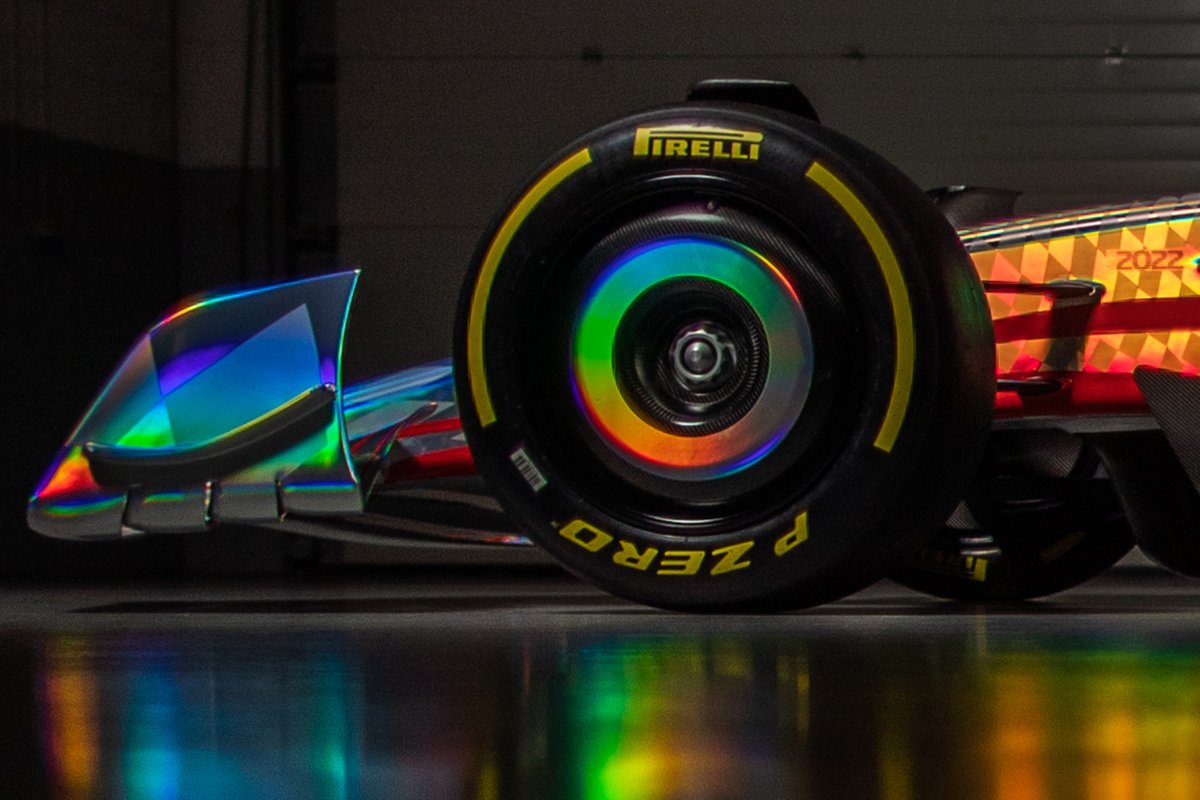The specially commissioned design was unveiled at Silverstone on Thursday ahead of this weekend's British Grand Prix.
While teams are already working hard on their 2022 challengers, F1 has itself pulled together its interpretation of what a car built to the new rules will look like.
The most striking characteristics are the flat nose, the wheel aero-covers, the large front wing with integrated endplates, and the unique rear wing concept.
The aim of the new car is to try to make the racing better, and especially improve overtaking.
It features a ground effect floor design and much simpler wings to ensure that much more of its downforce comes from areas of the car that are not affected by following a rival closely.
The FIA's head of single-seater technical matters Nikolas Tombazis said when the concept was first revealed that ground effect was the right way to go.
"We want to make it more possible for cars to race each and follow each other and to have more exciting battles," he said.
"We want to have tyres that enable people to fight each other without degrading or only giving a short interval for the person attacking to attack.
"They are simpler than the current cars because a lot of the small components have been removed, especially in front of the sidepods, the front wings are simpler.
"There is a diffuser going right under the car – a venturi channel type manner. There are tunnels under the sidepods from the front to the back."
The design revealed at Silverstone is remarkably similar to the wind tunnel model that F1 first revealed back in 2019 when the new rules were announced.
It is likely, however, that the actual 2022 cars will be different when they are launched next year, with teams looking to exploit the regulations and pursue the design in ways to better optimise performance.
F1 had originally intended to introduce the car for the start of the 2021 season, but it delayed the arrival until next year as the result of cost saving measures introduced in the wake of the coronavirus pandemic.





















